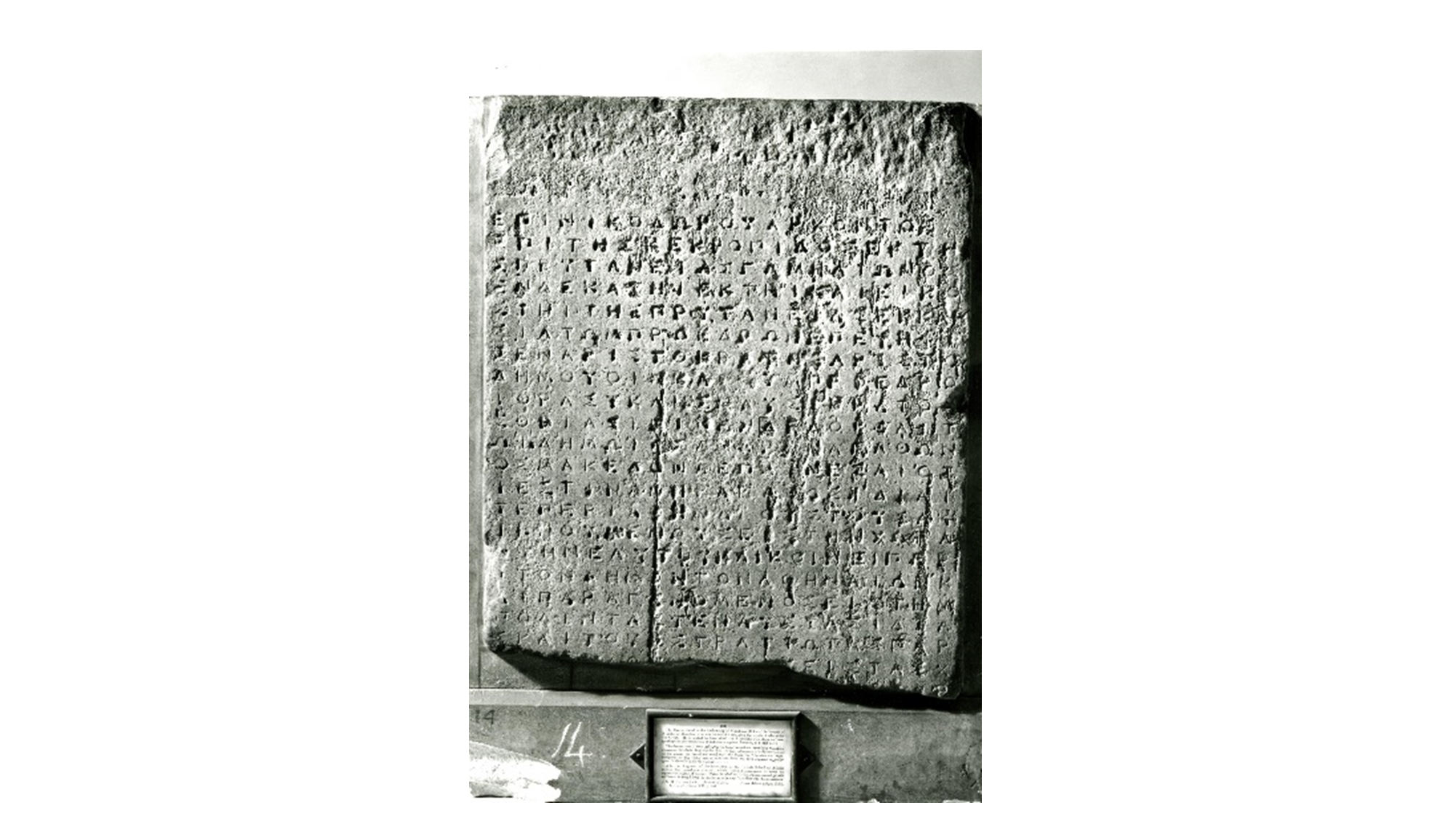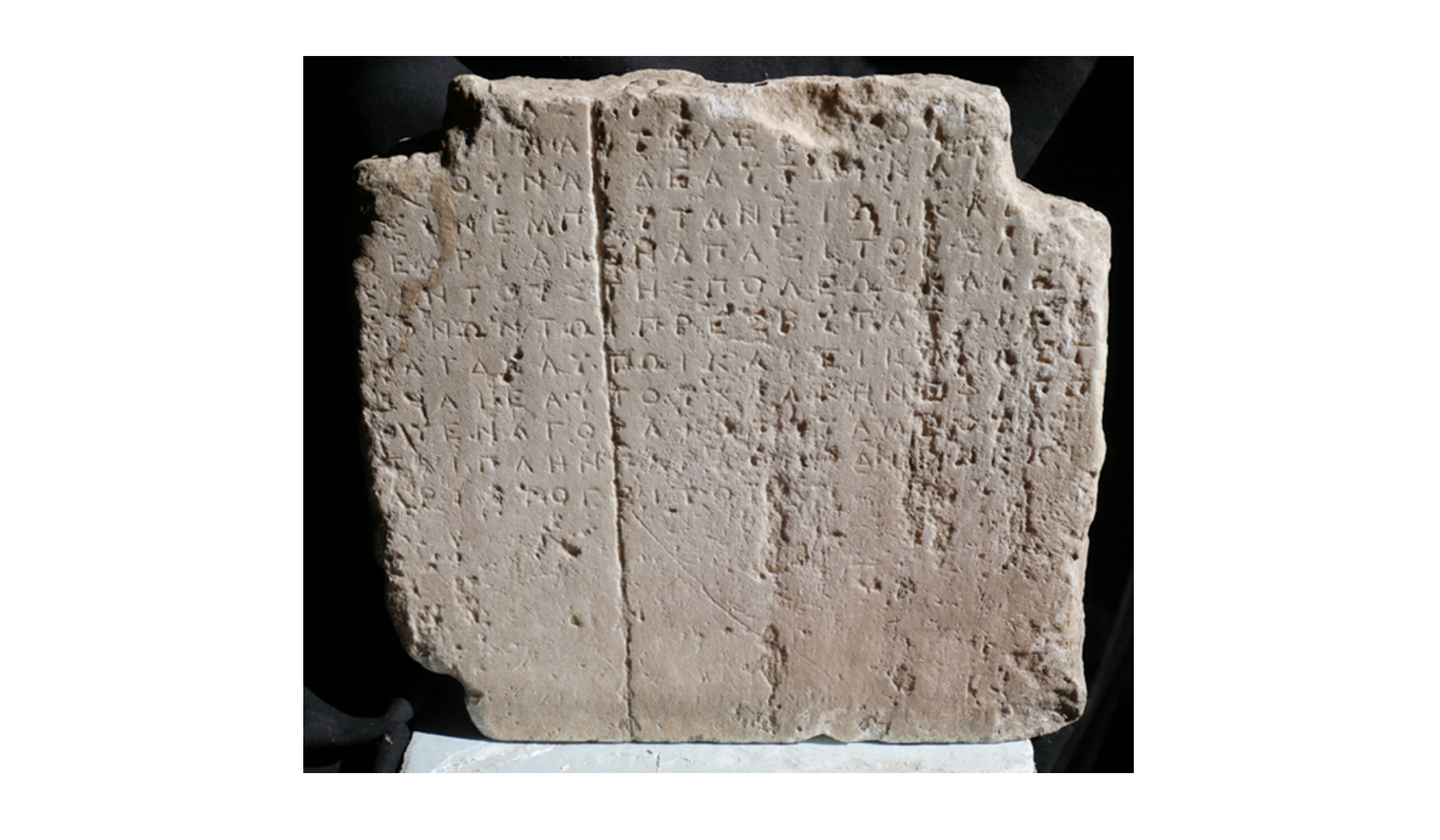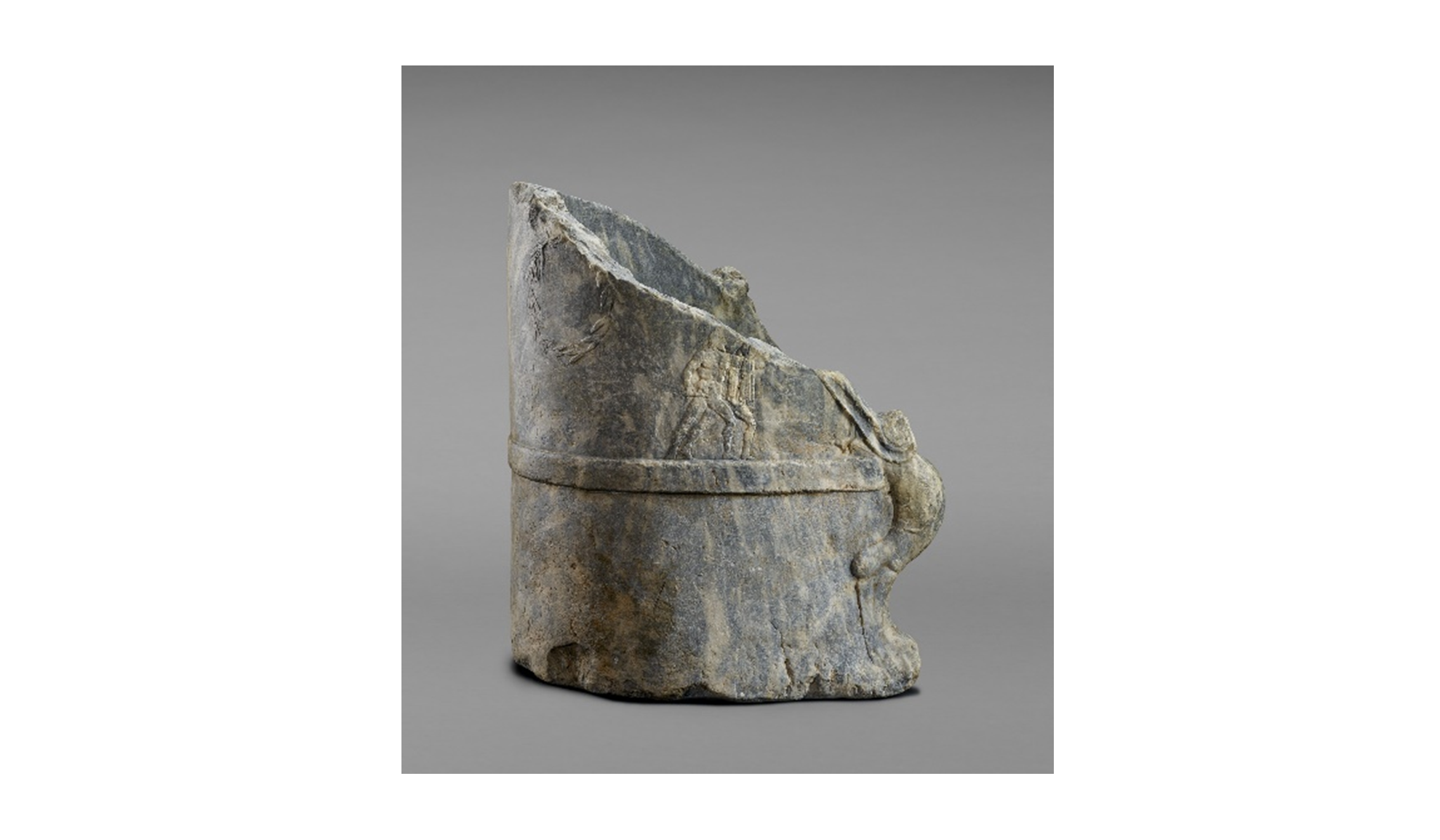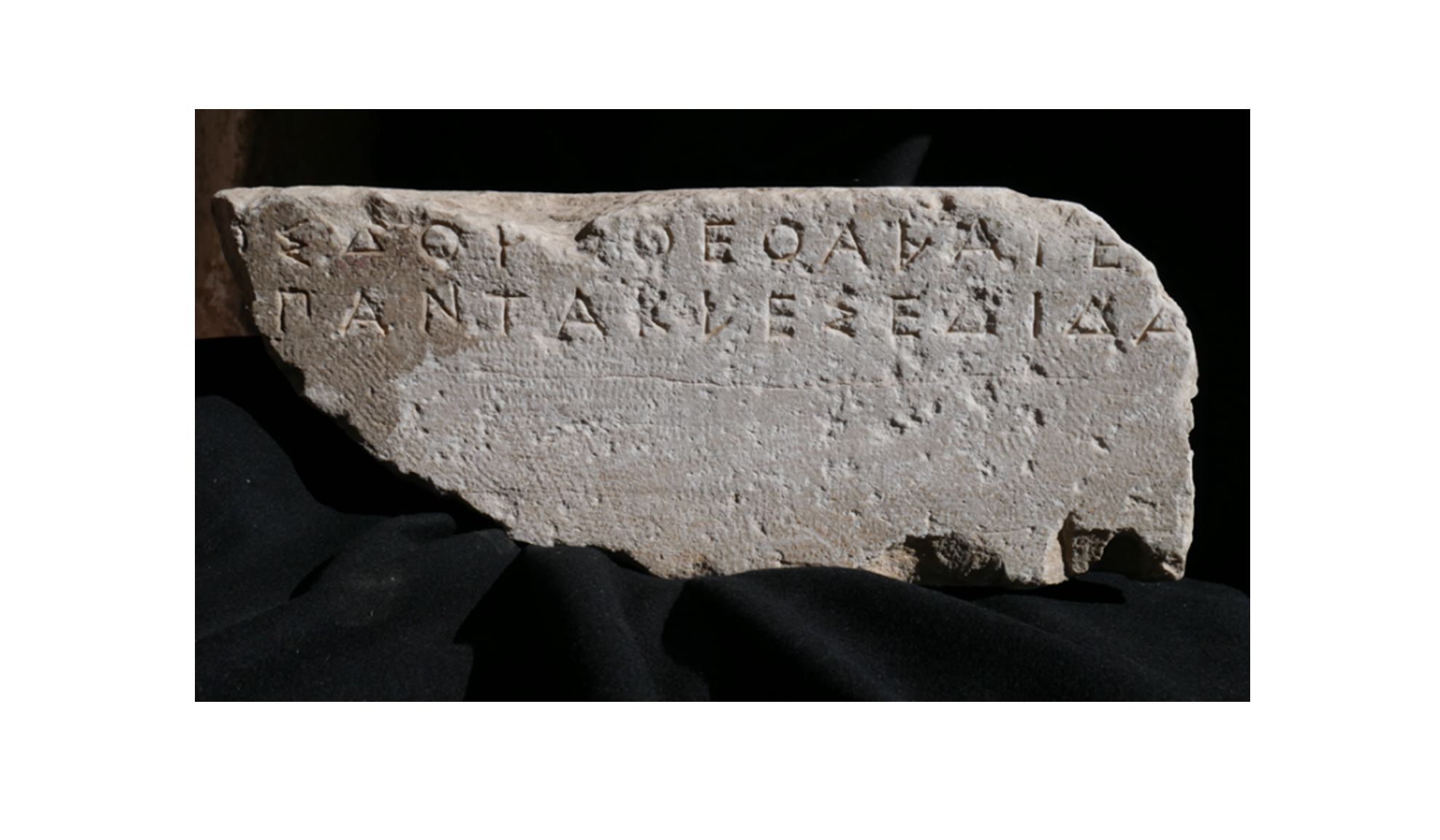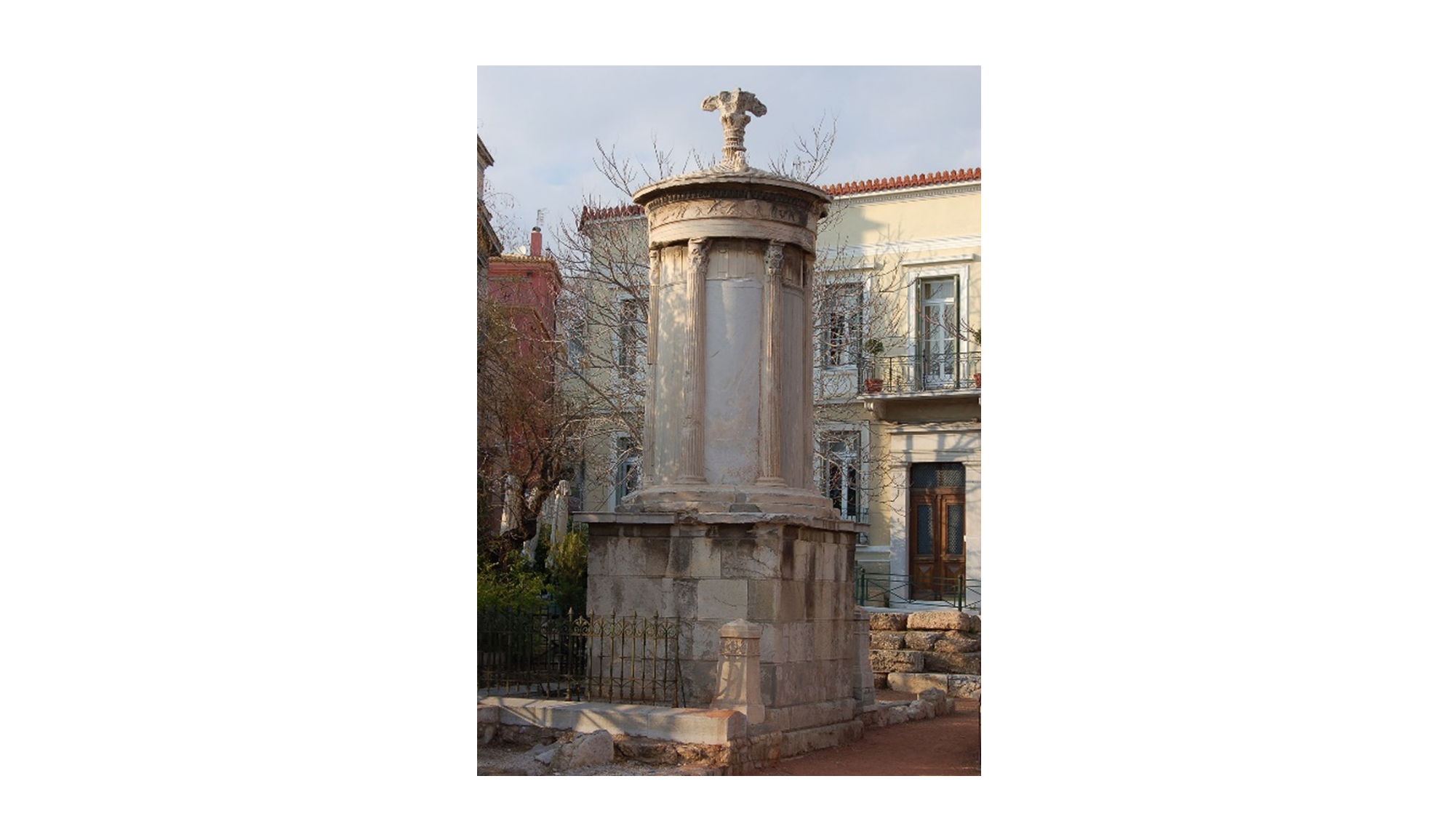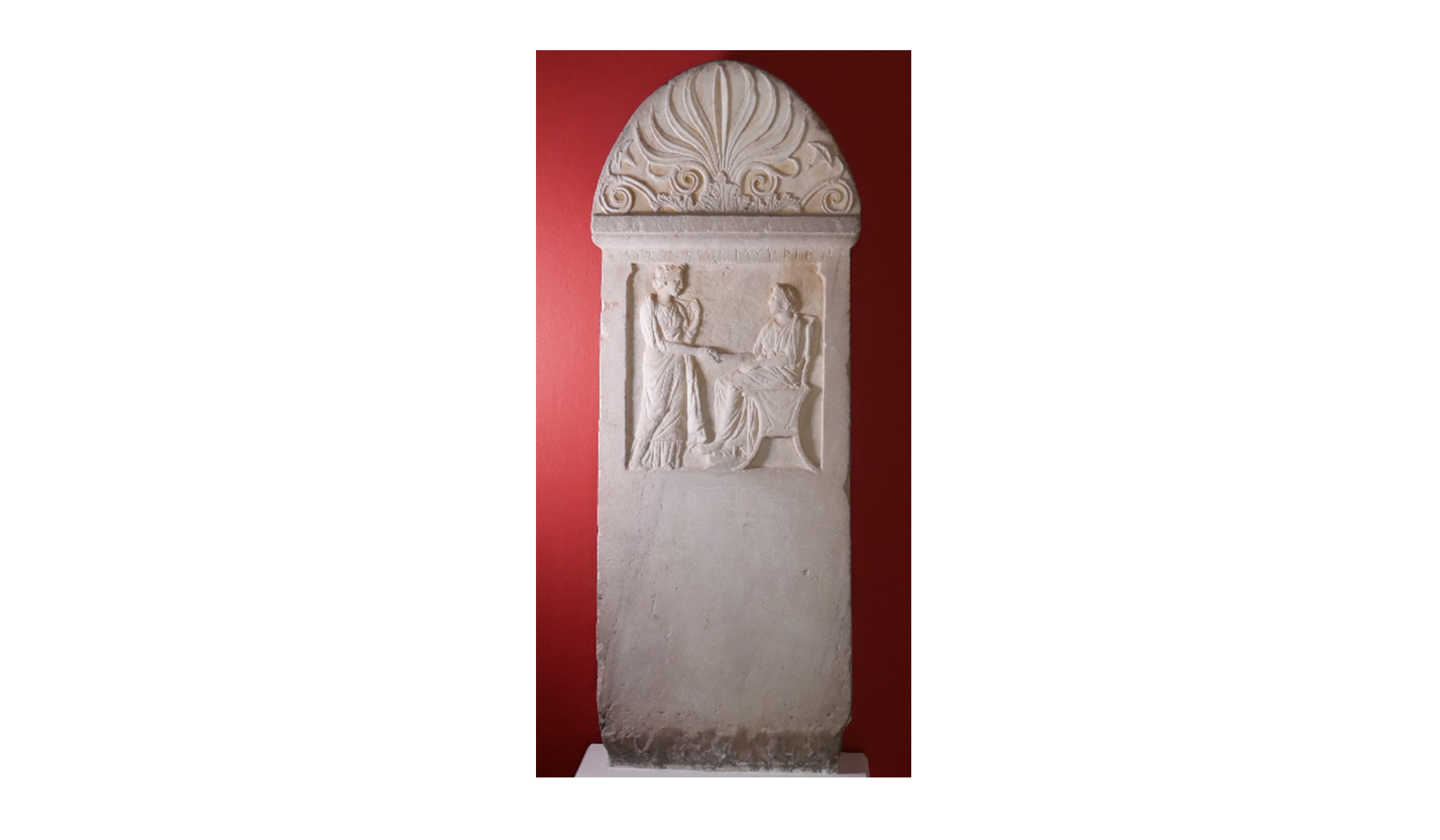Peter Liddel looks at the hard evidence.
Thucydides and Inscriptions
Thucydides of Athens was a historian of many virtues and was not shy about parading his qualities. Close to the beginning of his work he talked about accuracy and examination of evidence (1.21-23) as cornerstones of his methodology as a historian. The critical reader interested in Thucydides’ sources, however, is often disappointed: Thucydides may well have consulted different sources but they remain concealed beneath the surface of his narrative, and it seems that more often than not Thucydides made an executive decision on which of his sources he would follow.
But there are a few points in Thucydides’ work where a particular type of evidence, the inscription (epigraphe), takes on an important role. As his predecessor historian Herodotus did, Thucydides used inscriptions to develop his own rhetorical authority and to support his assertions about the past. In book 6 (chapter 55) -- when telling the story of Harmodius and Aristogeiton, who were heroised by Athenian democrats as tyrannicides and posthumously awarded honorific statues in the agora -- Thucydides asserted the accuracy of his knowledge that the tyrant Peisistratus’ oldest son and successor was Hippias (rather than Hipparchus, the victim of assassination). The basis of his certainty was the evidence of inscriptions. One of these he describes as a stele (slab) set up on the acropolis commemorating the crimes of the tyrants, on which was listed the name of Hippias after that of his father (6.55). The other was an altar dedicated to Apollo at the Pythian sanctuary in Athens whose inscription commemorated the archonship of Peisistratus the son of Hippias (in other words, the grandson of the tyrant) at Athens (6.54), dating to perhaps 522/521 BC. Thucydides, ornamenting his text with a hint of the aesthetics of the monument, described it as still legible but ‘with faded letters’. The altar is today extant, discovered in 1877 ‘in the courtyard of a house in the Ilissos area [in Athens] southwest of the Olympieion’; a further fragment from the crown of the altar emerged from an excavation in 2009, and was reported in the May 2011 newsletter of the Greek Epigraphical Society. Appearing in Meiggs and Lewis’ Greek Historical Inscriptions (Second Edition, 1988 no. 11), it is today well-known to scholars and students of ancient history as factually-informative and well-preserved inscribed monument whose letters are surprisingly clear to read. It is currently on display in the Epigraphical Museum of Athens.
The Athenians and their Inscriptions
The ancient Athenians were prolific producers of public writing, and the altar of Peisistratus the son of Hippias is one of the c. 20,000 ancient Athenian inscriptions of the period between the 8th century BC and 4th century AD that survive today on stone. An inscribed altar dedicated to a deity constituted an expression of piety combined with an individual’s desire to preserve a record of achievement. Individual ostentation aside, the ancient Athenians as a community had a habit of writing down state documents and erecting them in public places: laws, decrees, inventories, and financial records were set up on the acropolis and in agora. Accordingly, through this habit public documents were in placed the open air both for an audience of human passers-by to observe, inspect (or ignore) and at the same time were set beneath the supernatural gaze of the city’s deities. Public documents were written down on a range of materials, including wooden boards and bronze, but it is the surviving stone inscriptions, in Athens often consisting of free-standing marble slabs or architectural elements, that add so many dimensions to our understanding of the institutions, lifestyles and mentalities of ancient Athens.
Inscribed decrees
Many of the surviving public inscriptions of the classical and Hellenistic Athenians preserve decrees (psephismata) of the Athenian community. In the Athenian democratic system, decrees, the subjects of which were prepared in advance by the Council (boule) of 500, and were enacted at the assembly by adult citizen males (of whom there were perhaps about 30,000 in the fourth century BC). These citizens deliberated about and voted on proposed decrees by raising their hands in the air. It was through this system that the Athenians of the classical period decided to go to war, to make peace, to agree treaties, to make changes to religious practice, to revise their laws or to pass honours for citizens or foreigners. Sometimes, but not always, they made the decision to commit decrees to stone, and the majority of surviving examples are honorific.
One such example is the inscription recording honours bestowed by the Athenians upon Asandros of Macedon in 314/3 BC.
This is the only well-preserved decree of the Athenian assembly of the period 317-307, during which the peripatetic philosopher Demetrius of Phalerum governed Athens on behalf of the Macedonian Kassander. It survives as two non-joining fragments of a stele of white marble: the upper part (Figure 1) is currently held in the British Museum.
Fig. 1: Fragment a of the Honours for Asandros of Macedon (AIUK 2 no. 1). BM 1816,0610.187 © Trustees of the British Museum.
Acquired by Lord Elgin, it was among the objects purchased by the UK Parliament and transferred to the BM in 1816; the lower part is at the British School at Athens (Figure 2):
Fig. 2: Fragment b of the Honours for Asandros of Macedon (AIUK 2 no. 1). British School at Athens E 1. Photograph by Julian Lambert, reproduced with the permission of the British School at Athens.
The lower part (lines 25-34) gives an account of the rewards that were granted to Asandros: he was to receive dining rights (sitesis) in the city hall (prytaneion): this was the penalty proposed, perhaps ironically, by Socrates after he was found guilty of the charges brought against him in 399 (Apology 37a). But unlike Socrates, the people appear to have approved the award for Asandros. He and his eldest descendant were also given priority seating in the city’s competitions. But what set him aside from other prior honorands was the permission to set up a bronze likeness of himself on horseback in the agora anywhere he wished except beside the tyrannicides Harmodius and Aristogeiton. This was an extravagant honour: Asandros’ statue was the earliest known public honorific statue in Athens to have been on horseback, and one of, if not the earliest, known in Greece. But the prohibition on its placement beside the statue of Harmodius and Aristogeiton reflects a continued reverence for the heroes of Athenian democracy at a time when Demetrius’ regime limited democratic participation. Indeed, the Elgin Throne (another piece of marble brought to the UK by Elgin and now at the John Paul Getty Museum), a ceremonial chair of the 3rd century BC (Figure 3), likely originally from the Athenian agora, depicting on its right side the tyrannicides on the point of attack, is another indication of the ongoing reverence for them during the Hellenistic period.
Fig. 3: The Elgin Throne, depicting the tyrannicides (IG II² 5167). The J. Paul Getty Museum, Villa Collection, Malibu, California, 74.AA.12. Digital image courtesy of Getty’s Open Content Program.
Why did the Athenians decorate Asandros so highly? Asandros was an ally of Kassander, but the inscription, like many decrees, does not go beyond generic explanations of why the Athenians granted honours the upper part preserving the statement that he was praised ‘because he is a good man individually towards Athenians who come to his own country, and collectively towards the Athenian People, and on visiting the city he provided his own ships and soldiers to the Athenians to meet their needs … returned them to their own land at his own expense’ (lines 13-24). It is quite possible, as Stephen Lambert suggests, that Asandros had shown generosity in supporting the Athenians’ attempt of 314 BC to recover the island of Lemnos, a traditional possession in the North Aegean. And there was likely a future-oriented aspect of the award: the Athenians would want to curry favour with a valuable ally like Asandros for the future.
Private Inscriptions
Thus far we have focussed on the inscription of public documents in ancient Athens. But the inscribed medium was extensively used by individual Athenians for different forms of commemoration. During the classical period wealthy Athenians periodically undertook a service (or liturgy) known as the choregia, which was the sponsorship of a performance at a festival such as the City Dionysia or Thargelia. The victorious sponsor (choregos) of the dithyramb (a type of choral hymn) was granted a bronze tripod. From the late fifth century BC and later it was customary for victors to set these tripods up on bases in appropriate parts of the city. These bases were of different sizes, ranging from the small monument (Figure 4) of the son of Dorotheos of Halai (AIUK 2 no. 3):
Fig. 4: Choregic monument of the son of Dorotheos of Halai (AIUK 2 no. 3). British School at Athens E8. Photograph by Julian Lambert, reproduced with the permission of the British School at Athens.
of the late fifth century BC to the magnificent Monument of Lysikrates of 335/4 BC (Figure 5).
Fig. 5: Monument of Lysikrates (IG II3 4, 346). Wikimedia Commons.
In the latter case, Lysikrates was named as the sponsor of the tribe Akamantis which was victorious in the boys’ competition, in which Theon was pipe-player and Lysiades of Athens was the director. This monument, preserved largely complete today in situ at the end of the ‘Street of the Tripods’, was later re-used as a monastic library. Its cylindrical structure with Corinthian columns has been architecturally inspirational and has given rise to many modern neoclassical imitations. Above the columns an epistyle bears a relief frieze illustrating pirates, pursued by Dionysus and his satyrs, transforming themselves into dolphins: this theme perhaps reflected the subject matter of the dithyramb and also may have made reference to contemporary Athenian expeditions against pirates. This inscribed monument illustrates one of the ways in which the wealthy commemorated their contributions to Athens ostentatiously through the dedication of prizes.
A large proportion of inscriptions on stone surviving from ancient Athens are those which commemorate the dead. There are a number of publicly-commissioned stone stelai preserving lists of those who died in battle, but private monuments appear to have been much more widespread. A common format was for a rectangular, free-standing, stele to combine decorative finial, inscription of name and a sunken panel relief depicting human individuals. One such example is that of Myttope and Myrrhine, dating to the mid fourth century BC (Figure 6).
Fig. 6: Myttope and Myrrhine (AIUK 2 no. 9). British School at Athens E3. Photograph by Julian Lambert, reproduced with the permission of the British School at Athens.
Within the panel is a depiction in relief of two women clasping hands (dexiosis): one standing (who unveils herself) and the other seated. A plausible interpretation of this very common gesture of dexiosis is that it depicts a ‘farewell’ to a deceased person, but it is more likely that it demonstrates human intimacy or solidarity here expressed within a family unit. Such a monument can be read as a commemoration of a pair of individuals, but it probably would originally have been part of a larger family funerary enclosure (peribolos) where it would have stood alongside a number of other monuments commemorating members of a family.
The Attic Inscriptions Online Project
The preserved inscriptions of ancient Athens, therefore, offer a spectrum of perspectives into the history of institutions and human activity. Space prevents us from here from expanding on how they contribute to our understanding of ancient religious practice and belief, how they give insights into the financial management of the city and its expenditure or offer a view about the use of language and its development. This makes it all the more important that Greek inscriptions are available to the public in an accessible format. Since its foundation in December 2012 by Stephen Lambert the Attic Inscriptions Online (AIO) website offers open-access translations and commentaries (and, where possible, images and Greek texts). The website, which by early 2022 contained more than 2000 inscriptions, currently gives priority to laws and decrees, dedications and inscriptions or groups of inscriptions which are particularly useful for research and teaching. The Attic Inscriptions: Education pages host a range of resources based on Athenian inscriptions which support teachers at Key Stage 1-5. AIO is updated several times per year and work is currently focussing on dedications, inscriptions of the Attic demes and documents of the period of Roman domination.
From 2018 AIO initiated the publication of a series of papers on Attic Inscriptions in UK Collections, consisting of scholarly editions of the ancient Attic inscriptions in UK collections. The first Attic inscription known to have come to the UK was a second-century AD dedication to Herakles by an ephebic official (AIUK 11 no.7), acquired by Thomas Petty in 1627, which is now at the Ashmolean Museum. Since then more than 200 Attic inscriptions have been brought to the UK by travellers and collectors, and are dispersed in collections nationwide. The majority of them are now at the British Museum, but there are substantial collections also at the Ashmolean in Oxford, the Fitzwilliam in Cambridge and at the British School at Athens. Our project has made a number of new discoveries and offers re-interpretation of monuments in UK collections, and we have highlighted the scholarly and educational value of objects that were collected partly for their aesthetic value but also owing to their perceived scholarly significance. In this sense there is a resonance with ancient attitudes to inscriptions: ancient historical writers like Herodotus and Thucydides included inscriptions for their ornamental value but also as a way of substantiating historical arguments. In a parallel way, modern audiences value individual inscriptions for their physical form and aesthetics but also in terms of their contribution to the interpretation of the ancient past. Ancient and modern attitudes to inscriptions however, are quite different when we consider the broader attitude to epigraphical material: in particular the modern preoccupation with ordering, sifting and publishing epigraphical material, where possible on the basis of close autopsy and accurate scrutiny, is one that may have looked unfamiliar to Thucydides and his contemporaries.
Peter Liddel is a Professor of Greek History and Epigraphy at the University of Manchester. He has published widely on ancient Greek history and epigraphy, including the 2-volune Decrees of Fourth-Century Athens (CUP, 2020). He is Co-Editor of the Annual of the British School at Athens and a member of the Editorial Committee of Attic Inscriptions Online, and the author of several papers for the Attic Inscriptions in UK Collections series. Work currently being undertaken includes a volume for the AIUK series on the Athenian Accounts and Inventories in the British Museum and a beginners’ book on Greek Inscriptions for the British Museum. He can be reached at: [email protected]

